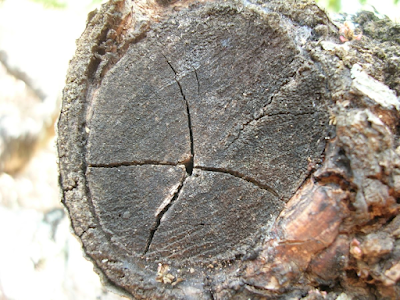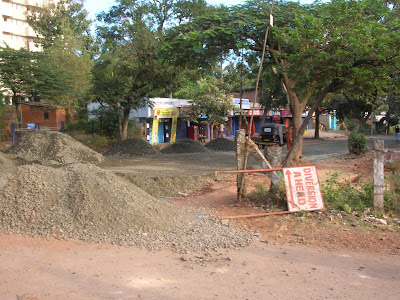During our short stint at Delhi, a 8 year-old then, Dad had taken us to an exhibition at Pragati Maidan. I do not remember much but seeing a massive candle at a stall, that candle was a show piece - not for sale. The candle was about 8 inches in diameter and 2 feet tall tinted with light shades of pink, green and blue and a small flame burned over the wick. From then on I always wanted to see how candles were made.
Many years later, during my high school days, I wanted to experiment candle-making. On Dad's behest I wrote a short article illustrating steps of candle making... melting wax, placing wick in mold, pouring molten wax and finally a ready candle. Those days Dad used to chew tobacco, his brand was Baba Zarda packed in small attractive tin about an inch in diameter and 3 inches tall. I depicted Baba Zarda tin in my sketches and Dad was all smiles looking at the drawing. The experiment did not really take place.
Many many years later, my fascination for candles was still alive. I used to buy 1kg candles from a shop located in one of the by-lanes of Avenue Road in Bangalore. The shop was unique, the only products sold were candles and camphor. I did not think about asking the shop owner if I could see the factory.
Many many many years later, I heard from one of my aunts about a candle factory very close to my place in Dharwad. Finally I got to see how candles are made. Here we go...
The first step is melting paraffin slabs. Sudhir Pawar, one of the partners, told me this was imported from China and different grades are available, wax burn-rate the differentiating factor.


That's a bucket full of molten wax which will be poured into the candle making machine, a small mechanical device powered by human force. I could see around 20 such machines with molds to make various sizes of candles. Below you can see one of the machines ready with wicks in position. Molten wax is poured on the surface which flows into the molds.

It's my guess that wax is allowed to cool overnight. A wheel on the side is turned, (smaller candles require less force and larger candles need more force) which pushes the wax out of the molds. Simultaneously wicks are also pulled up for the next batch. The device is semi-automatic.



In the below picture, you can see candles on the top and bobbins of wick in the rack below.


That's the packing section. Color plastic films are rolled and stuck with glue. My guess; the idea is not just to give them color but also to keep them from sticking to each other when packed in boxes of ten. Sudhir & Co. manufactures basic candles in various sizes with prices starting from Rupee 1 to Rs.25. These are the fast moving ones. They are not into decorative candles because it's not economically feasible. Sudhir mentioned about German automatic candle-making machines which cost in the range of 30 million Rupees.

That's a bucket full of solid wax. If a wick (or more) were put before it cooled, it would have been a candle-in-a-bucket! I asked Sudhir about the largest one they've made and I got a half kilo candle as a souvenir. But what I had in my mind was the candle I had seen in Pragati Maidan. I did not as him... it was the first time we met. I'll make another visit some other day and ask them to make one massive candle no matter how much it costs ...of course within reasonable limits.
Here's a short video.
Sudhir is also into camphor business ...there's some connection between camphor tablets and candles.

Here, the starting point is camphor powder which is poured into the funnel on the top as the machine is running. Powder is pressed into neat little tablets which fall into the bucket placed below. That's it. Different dies are used to make different size or shape tablets. Next they are packed into small plastic boxes or plastic boxes and are ready for sale.
.........






























